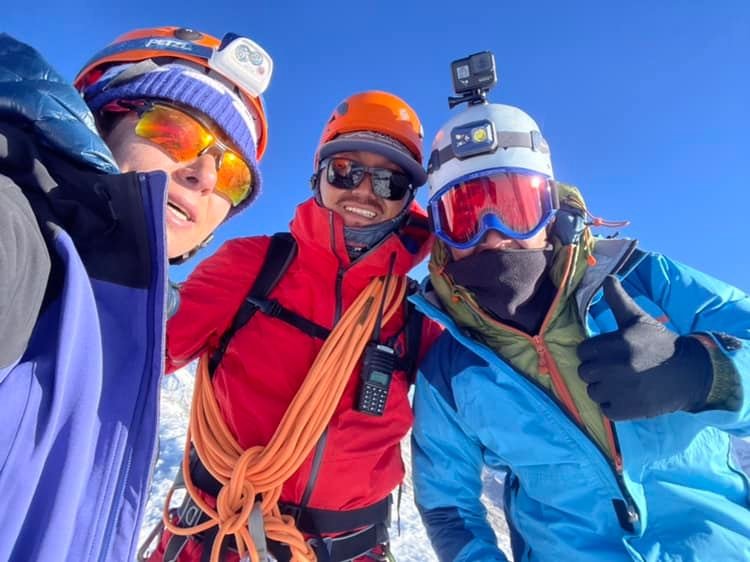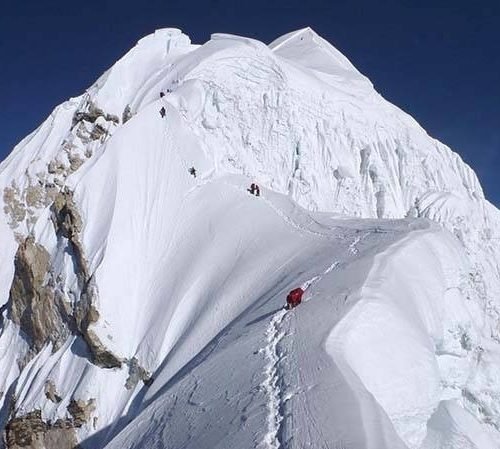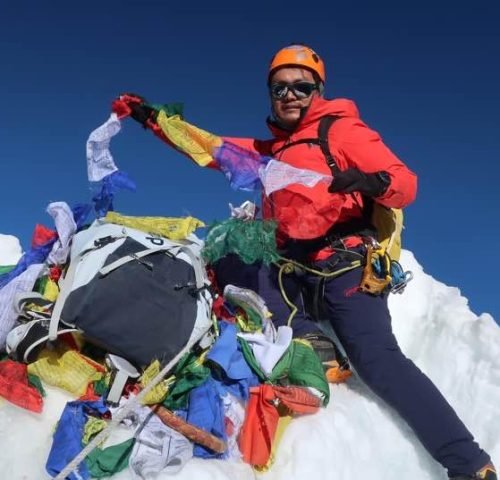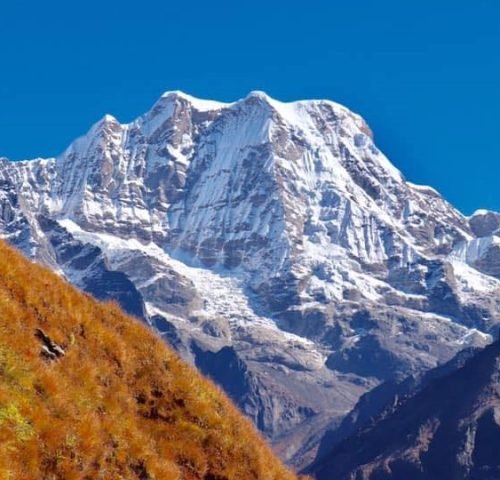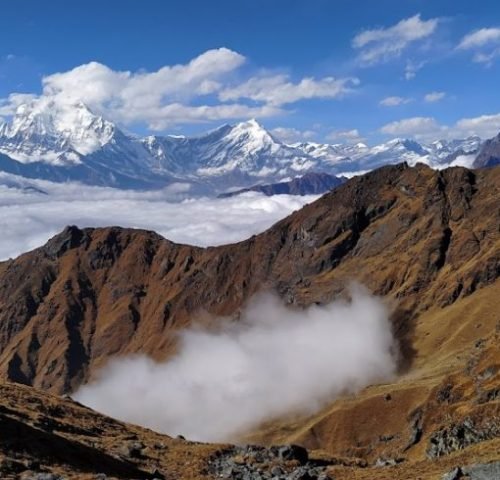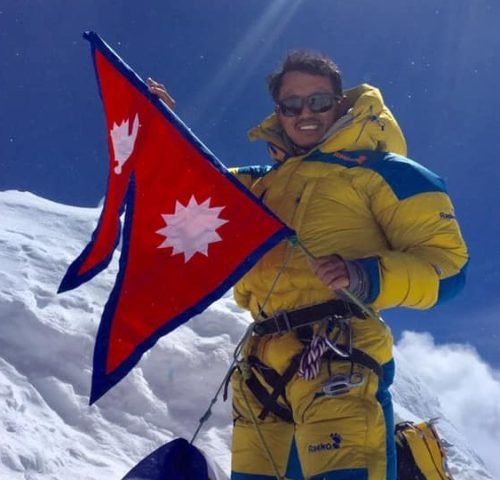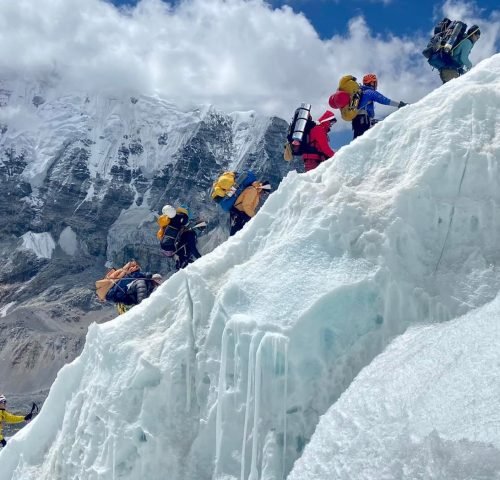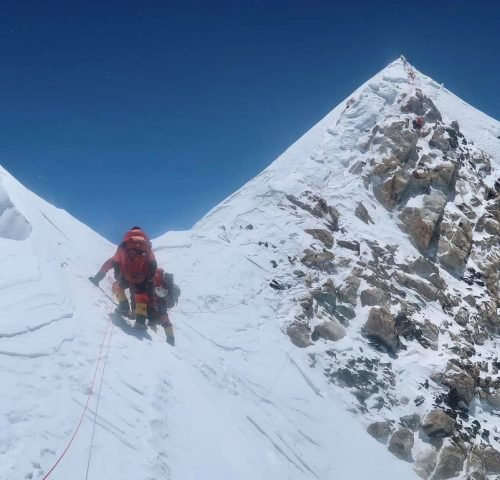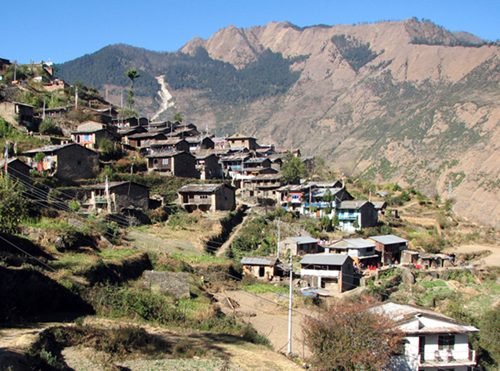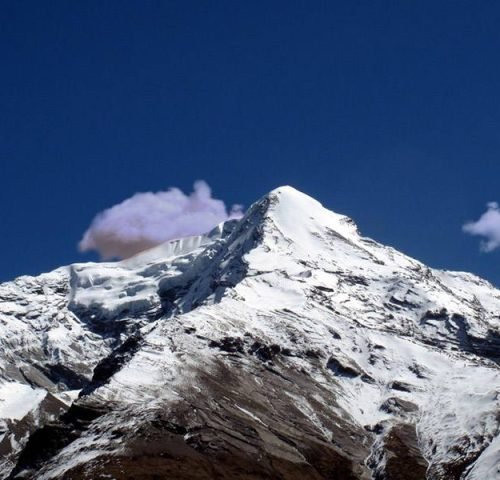Overview
The Mt. Makalu Expedition stands as a testament to human determination, endurance, and the relentless pursuit of conquering the world's highest peaks. Located in the Himalayas, Makalu is the fifth highest mountain in the world, attracting mountaineers from around the globe. This essay explores the historical significance, challenges faced, and the impact of the Mt. Makalu Expedition on mountaineering and the exploration of our planet's most formidable landscapes.
The Makalu expedition holds immense historical significance in the realm of mountaineering. The first successful ascent of Makalu was achieved by a French team led by Jean Franco in 1955. This marked a milestone in the history of mountaineering as it became the first successful ascent of a peak higher than 8,000 meters after the legendary conquest of Mount Everest in 1953. The achievement of the French team on Makalu paved the way for future expeditions and inspired countless mountaineers to test their limits on the world's highest peaks.
The Mt. Makalu Expedition is not for the faint-hearted. The mountain's challenging terrain, extreme weather conditions, and technical difficulties pose formidable obstacles to climbers. Its pyramid-shaped peak, steep ridges, and icy slopes demand exceptional mountaineering skills, physical fitness, and mental resilience. The elevation of Makalu, standing at 8,485 meters, amplifies the effects of altitude sickness, making acclimatization a crucial aspect of the expedition. Moreover, the unpredictable weather patterns, including high winds and heavy snowfall, pose additional risks and further complicate the climb.
Details Itinerary
Day 01: Arrival in Kathmandu (1,350 m)
Our office representatives will welcome you outside the terminal hall and transfer you to the hotel. We will brief you about tomorrow’s activities and collect documents required by our office.
Day 02: Trip preparation and introduction.
On the second day, we will complete all of our formalities, such as getting the required paperwork, permits, and other formalities required for our expedition, and we will begin making preparations for it. We will now prepare our luggage, go shopping, and double-check everything we need. There will be briefings on every part of the expedition, including all gears and equipment, the duration of the expedition, lodging options, base camp facilities, and all other aspects related to the expedition. It also gives you the chance to interact with and get to know your climbing companions and colleagues.
Day 03: Fly to Tumlingtar, then drive to Num village (1,500 m): 35 minutes of flight time, 4-5 hours of driving time.
We will go to the domestic airport in Kathmandu after an early-morning breakfast and take a 35-minute flight to Tumlingtar, the deepest valley in Nepal. The entrance to Makalu Barun National Park is located in the Sankhuwasabha district of Tumlingtar. From there, we’ll meet up with the rest of the team and drive for around four to five hours to Num village. Overnight stay in hotel.
Day 04: Trek to Sheduwa (1510 m): 5-6 hours
After a night in Num village, we went off on the trek to Sheduwa. First, we descend sharply for two and a half hours to reach the Neguwa River with a suspension bridge, which we cross to enter the deep woods and little communities. We get to see the lovely crop farms on terraced fields. Later, we arrive at a checkpoint at Makalu Conservation Area, where we must get admission permits.
Day 05-06: Day 5-6: Trek to Tashi Gaon to acclimate (2070 m): 4-5 hours of trekking.
The path from Sheduwa to Tashi Gaon is simple since we go on level areas through the bushes with intermittent ascents. After nearly 4 hours of traveling, we arrive at Tashigaon, a massive Sherpa village. Overnight stay in tea house.
Day 07: Trek to Khongma (3760 m): 6-7 hours of trekking
The route from Tashi Gaon to Khongma is an uphill walk-through rhododendron and pine forests. The Kongma La ridge has a single tea house. So, we set up a tented camp and slept the night away. Our chefs and cooks have prepared delicious meals for you. Overnight stay in tea house.
Day 08: Trek to Mumbuk (3520 m): 7-8 hours of trekking
We leave Khongma on a route that ascends till we reach a beautiful lake, “Kalo Pokhari” meaning “a black lake,” at 4000 m, and then descends to Mumbuk. Overnight stay in tea house.
Day 09: Trek to Nehe Kharka (4320 m): 7-8 hours of trekking
The trip becomes more challenging and riskier after Mumbuk, as the trail passes through a landslide-prone region. The routes’ last sections rise through meadows and woodlands. Mt Tutse, Peak 7 (6185 m), Isuwa La (5340 m), and many more peaks provide breath-taking vistas. The Kharka is pastoral land and an excellent camping location. Overnight stay in tea house.
Day 10-11: Trek from Nehe Kharka to Makalu Lower Base Camp (4870 m): 6-7 hours of trekking
We ascend from Nehe Kharka to Mt. Makalu’s Lower Base Camp. Mt. Makalu (8481 m), Baruntse (7152 m), Kali Himal (6985 m), Chamlang (7390 m), and Makalu II (7640 m) are all visible from the base camp. We will spend two additional days at the lower base camp for acclimatization and adventure preparation. Overnight stay in teahouse
Day 12: Hike from Lower Base Camp to Higher Base Camp (5600 m): 4-5 hours of trekking
After acclimatization in the lower base camp, we climb up to the higher base camp at roughly 5600 m. overnight stay in tent.
Day 13–17: Base camp training and preparation
Before heading to the higher elevations, we have to spend several nights at base camp to properly acclimate. We will do one or two rotations climb up to Camp III before pushing for our summit of Makalu. we organize training in base cam covering climbing techniques, glacier travel, rope fixing, ascending, descending, safety techniques, abseiling, belaying, and the use of oxygen, a mask, and a regulator. Overnight stay in tent.
Day 18: Climb to Camp One (6100 m): 4-5 hours of climbing.
After completing basic and advanced training with your climbing Sherpa guide, you will be prepared to try the climb to Camp 1, which is located at a height of 6100–6400 m. Once on the glacier, you’ll encounter a variety of terrain, including crevasses, moraines, and 200 meters of blue ice. Camp one is divided into two sections: lower camp one and higher camp one, separated by a few hundred meters. Overnight stay in tent.
Day 19-20: Climb to Camp Two (6600 m): 4-5 hours of climbing.
The route from camp one to camp two on Mt. Makalu is considered a fairly challenging climb with ice and snow. climbing across snow and ice, and there are a few patches of ice. These sections can be crossed using fixed ropes. Camp 2 is located atop the snow-covered terrace. Overnight stay in tent.
Day 21: Return to Camp II after touching Camp III (7200 m). 3 to 4 hours’ climbing then descent.
We will next approach Camp III at 7200 meters after several days of preparation. For those climbers ascending without oxygen, we will stay in Camp III and move to Camp IV the next day as we gently descend to Camp II for the night. Your trek to the summit will be made simpler by these constant rotations. These will help you improve your climbing tool and gear skills. Overnight stay in tent
Day 22: descend to the Base Camp (5356 m): 4-5 hours.
After long hikes and climbs, our bodies need to recover. We will thus descend to the Base Camp, which is at a considerably lower height, after spending the night in Camp II. We use these ascents and descents to acclimatize to the Himalayas and prepare to ascend to Camp IV and above the Death Zone. Overnight stay in tent
Day 23-28: Rest day in base camp (5650 m)
Before ascending to the summit, we allotted a few days for full rest. For this, we may either fly back to Kathmandu (for those who can afford it). Our expedition leaders and the crew will assess the weather while at rest to determine when to make the final summit push. Our teams and climbing Sherpa will build higher camps at Camp IV during these respite periods in preparation for the summit push. final briefing on the everyday camp and Everest summit push. The equipment of the members will be checked by the expedition leaders to make sure everything is ready for our upcoming expedition. Overnight stay in tent
Day 29: Climb to Camp II (6600 m): 6-7 hours of climbing.
The route from camp one to camp two on Mt. Makalu is considered a fairly challenging climb with ice and snow. climbing across snow and ice, and there are a few patches of ice. These sections can be crossed using fixed ropes. Camp II is located atop the snow-covered terrace.
Day 30: Climb to Camp three (7200 m): 5-6 hours of climbing.
The 600-meter distance between camps two and three is the longest section of the trip. There are no ladder crossings required. A climbing Sherpa crew fixes the main ropes. This is the camp from which 30% of climbers want to make their summit push. This section takes about four hours for normal climbers and five hours for experts.
Day 31: Climb to Camp Four (7600 m): 3-4 hours of climbing.
Because the oxygen levels are so low at this altitude, we need supplementary oxygen during the IV. In this stage, you must climb for three hours on steep snow. It’s a bit risky in the autumn since the snow slope is covered with a layer of ice, making the area avalanche prone. The camp will be put up directly above Makalu La. Overnight stay in tent.
Day 32: Climb to the summit (8486 m) and descend to Camp II. III 8-9 hours of climbing
On the summit day of Makalu, most climbers begin their ascent at about 10:00 p.m. If all goes well, they will arrive at the main summit between 6 and 10 AM. It takes roughly five hours to return to Camp Four from the summit, and another two hours to go to Camp Three. We will return to Camp II and rest the night there after spending the night in Camp III or Camp II.
Day 33: descend to Base Camp (5600 m): 6-7 hours of walking.
We will descend back to Base Camp, and, in keeping with our duty as responsible climber, we will clean up all the waste around the camp. We’ll then get ready to make the trip back to Kathmandu. Overnight stay in tent
Day 34: Trek to Yangle Kharka (3600 m): 6-7 hours trekking
Through the challenging trek, we make our way back to Yangle Kharka. After that, we’ll spend the night in a tent camp at Yangle Kharka. Overnight stay in tea house.
Day 35: Trek to Khongma (3560 m): 7-8 hours of trekking
We follow the same route over landslide-prone terrain back to Yangle Kharka. We eventually make it to Khongma, where we will set up a tent for the night, after traveling for around four hours. Overnight stay in tea house.
Day 36: Trek to Sheduwa (1510 m): 7-8 hours of trekking
During our return, we cover more distance as we descend on major parts. So, we trek to Sheduwa through Tashigaon upon our return. Overnight stay in tea house.
Day 37: Trek to Num and drive to Khandbari or tumlingtar: 4 hours of walking and 3 hours driving.
The trail from Sheduwa to Num descends steeply at the start and later ascends to reach Num. After passing a small forest of bamboo and small villages, we finally reach Num. overnight stay in hotel.
Day 38: Tumlingtar to Kathmandu: 35 mins flight
Today, we fly back to Kathmandu after our long time in the mountains. We can rest and relax throughout the day at our hotel or get in touch with our loved ones. In the evening we celebrate our successful journey to the Makalu expedition and back with a farewell dinner. Overnight stay in hotel.
Day 39: Final departure day:
Final Departure to your own destinations. Generally, two hours before your flight time to get Kathmandu airport is needed in Nepal.
Cost Details
WHAT'S INCLUDED:
• 4 Nights Hotel accommodations in Kathmandu at 3-star Hotel on Bed & Breakfast plan (before & after expedition).
• All land transportation arrival and departure transfer services to and from Airport both Domestic and International with other necessary surface transport as per itinerary.
• (Kathmandu - Tumlingtar - Kathmandu flight ticket) Kathmandu - Makalu Base Camp - Kathmandu for expedition members, Liaison officer & Expedition staffs.
• Transport of food supply & expedition equipment to Base Camp & back.
• Expedition Permit fee of Mt. Makalu.
• Makalu National Park Entry Permit, Local Grassland Permit Fees
• Full board in lodges during trekking to base camp and back.
• All kitchen tent, store tent, dining tents, toilet tent, table, chairs & cooking utensils for BC.
• Fresh Food and fuel at Base Camp.
• Base Camp single/dome sleeping tent & Mattress for each member.
• High Tents above Base Camp. C1, C2. High altitude food and fuel above Base Camp.
• Satellite Phone available at Base Camp, but nominal charge for use.
• There will be one personal professional climbing guide while climbing. one Sherpa climber for one person
• Service of Government Liaison Officer.
• Service of cook and kitchen boy at Base Camp.
• Insurance, Equipment allowance, daily wages of cook, kitchen boys & Liaison officer.
• 2 Expedition duffel bag for each member.
• Generator or Solar panel at Base Camp for light and charging.
• Agency service charge and Tax.
WHAT'S NOT INCLUDED
• International airfare from/to your country.
• Nepal entry visa fee (can be obtained at the airport at upon arrival).
• Lunch and dinner during your stay in Kathmandu.
• Hotel accommodation after 4 night's stay in Kathmandu.
• Personal climbing gear and equipment above Base Camp.
• Personal insurance such as travel, accident, medical, emergency evacuation & lost luggage.
• Permit fees & customs charges, etc. for SAT phone, communication equipment & commercial filming.
• Expenses of personal nature such as drinks, laundry, postage, telephone etc.
• Tips and summit bonuses ($1500 is compulsory if summited)
